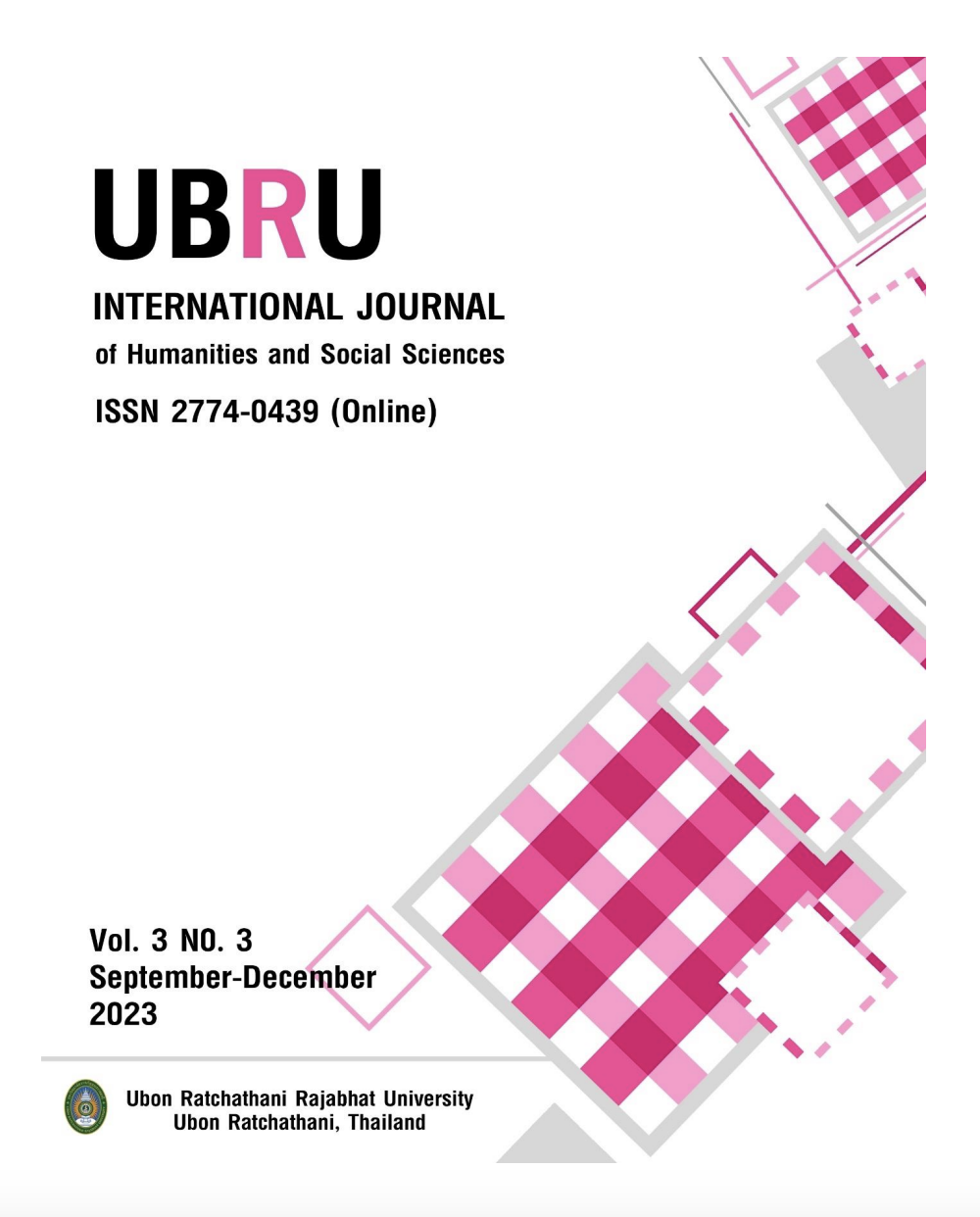Proposed of Using Speech Recognition Technology to Detect Read Aloud in Thai Tone Indications for Primary Education Students
Main Article Content
Abstract
This academic article has objectives were 1. to study the techniques in data analyzing of speech recognition systems techniques to detect Thai Tone Indications for primary education students, and 2. to study the result of speech recognition systems techniques to detect in Thai Tone Indications for primary education students. Sample group in this research were 30 primary education students in Grades 4 – 6 of Wat Na Klang School in Nakhon Sawan Province, Thailand. Research tools was speech recognition systems techniques to detect reading aloud skills in Thai tonal conjugation. Results showed that, 1.the three techniques involved in sound analysis consisted of Spectrogram Sound Wave Change, Wavelet Transform Audio Format Conversion, and two sets of data similarity comparison techniques named Dynamic Time Warping (DTW). The researchers used three techniques in analysis and comparison for making the more similar to the sound signal than using a single technique in analytics. 2. the result of using speech recognition system to detect reading aloud in Thai Tone Indications showed results of pronunciation practice and compared the similarity of audio signals that after using the technique in 5 analytical times, the largest average result was 93.52 Percent, the least average result was 87.75 Percent, and the total average result was 90.66 Percent.
Article Details
References
Biometric Today. (2018). 5 Differences between Voice and Speech Recognition. Retrieved
from https://biometrictoday.com /5-differences-between-voice-and speechrecognition/.
Boonnithi, K. (2021). Development of reading and spelling skills of first grade students using
individual diagnostic exercises. Independent Study of Master Thesis, Naresuan
University, Phitsanulok, Thailand.
Cholkerkkait, C. (2018). Development of Reading and Writing Skills by Using Skill Practice
in Thai Language Core Content Area for Grade 1 Students. Action Research, Wat
Bomabring School, Surat Thani, Thailand.
Dipatee, K. and Narapongkasem, S. (2018). The Results of Thai Learning Activities Tonal
Diversion and Tonal Writing by Using Thai Language Skill Practice Module for
Prathomsuksa 3/3 Students at Nibongchanupathum School Mueang Disirict, Yala
Province. Proceedings of the 1st National Conference in Thai and Cultural Studies in
Undergraduate Level, Thaksin University, Song Kla, Thailand, pp 225-239.
Hanifa, R. M., Isa, K., Mohamad, S. (2017). Malay speech recognition for different ethnic
speakers: an exploratory study. In: 2017 IEEE symposium on computer applications
& industrial electronics (ISCAIE)
Kershet, J., Bengio, S. (2009). Introduction. In: Margin, L., Methods, K., editors. Automatic
speech and speaker recognition. West Sussex, United Kingdom: John Wiley & Sons
Ltd, 2009.
Kikel, C. (2019). Difference between voice recognition and speech recognition. Retrieved
from https://www.totalvoicetech.com/difference-between-voice-recognition-andspeech-recognition/.
Korpanyapipat, R. (2015). Noise resistant recognition for Thai speech. Master of Science,
Thammasat University, Bangkok, Thailand.
Malangpoo, P, Philuek, W., and Pomsamrit, N. (2022) Using Speech Recognition System for
Enhancing Chinese Pronunciation. International Journal of Mechanical Engineering,
(1), (January), 3442-3451.
Malaiwong, K. (1997). Innovation in Technology 200 IT Perspectives. (2
nded.). Bangkok:
Electronics and Computer Keyboard Technology Center, Bangkok, Thailand.
Mardyusoh, S. and Tornram, T. (2020). The development of learning achievement in Thai
language at the elementary level 4th grad study by using tonal diversion exercises.
Thamsuksamulniti School, Hatyai District, Songkhla Province, Proceedings of
Hatyai National and International Conference, Songkhla, Thailand, pp 485-499.
Ministry of Education. (2020). Core Curriculum Thai language learning subject group
(Revised Edition B.E. 2560) according to the Core Curriculum of Basic Education BE
Retrieved on July 10, 2020, from http://academic.obec.go.th/
images/document/1559639270_d_1.pdf, 2017.
Na Nakhon, P. (1981). Thai language problem. (4
thed.). Bangkok: Central printing house
Office of the President King Mongkut's Institute of Technology Ladkrabang,
Bangkok, Thailand.
Naiyaphat, O. (2005). Quantitative and qualitative methods of analysis in behavioral sciences
and social sciences. (2
nded.). Bangkok: Chulalongkorn University Printing House,
Bangkok, Thailand.
UBRU International Journal Ubon Ratchathani Rajabhat University
Vol.3 No.3 September - December 2023 16
Nasani, K. (2003). Thai tones pronounced by tracheo-esophageal speakers: Phonemic
analysis and perception testing. In Thongkham, T. L. (editor), Thai accent of people
without a voice box, pp. 97-118. Bangkok: Thailand Research Fund.
Panto, P. (2020). Organizing teaching and learning in Thailand under the outbreak situation
of coronavirus disease 2019 (COVID–19). Parliamentary radio station and academic
offices, Bangkok, Thailand.
Phamontri, S. (2015). The importance of the Thai language. Retrieved from
https://www.classstart.org/classes/4131.
Poosawad, S. (2018). Comparison of Learning Achievement in Thai Tonal Conjugation of
Grade 4 Students of Wat Don Yor School by Using Different Teaching Methods.
Action Research of Wat Don Yor School, Nakhon Nayok, Thailand.
Sharma, A. M. (2019). Speaker recognition using machine learning techniques. Master’s
Projects. Retrieved from https://scholarworks.sjsu.edu/etd_projects/685.
Sinthaphanon, S. (2009). Innovations in teaching and learning to improve the quality of
youth. (3
rded.). Bangkok: Chulalongkorn University Press, Bangkok, Thailand.
Suriyasophapan, C. (2003). Basic frequency values of tones in the Thai language of people
without a larynx and esophagus according to the duration of speaking training and
the perception of tones by listeners. In Teeraphan L. Thongkham (editor), Thai
accents of people without a voice box, pp. 119-132. Bangkok: Thailand Research
Fund.
The Secretariat of the Education Council. (2023). Report on the results of the study of
learning regression of basic education students in the COVID-19 situation:
conditions, lessons learned, and guidelines for developing the quality of learning.
Retrieved from http://www.onec.go.th/th.php/book/BookView/1932
Thodthankun, T. and Chansuwan, P. (2016). The Study of Errors in Thai Writing: A Case
Study of Students of Rajamangala University of Technology Suvarnabhumi
Nonthaburi Campus. Proceedings of The 1st RUSNC Rajamangala University of
Technology Suvarnabhumi National Conference, Nonthaburi, Thailand.
Thonglor, K. (1972). Principles of the Thai Language Bangkok. Bamrungsan, Bangkok,
Thailand.
Watcharasukhum, S. (2013) Problems in Using Thai Language from Thai - Malayu Students
in Three Southern most Provinces, Yala: Yala Rajabhat University, Thailand.
Zhi-Qiang, H., Jia-Qi, Z., Xin, W., Zi-Wei, L, and Yong, L. (2019). Improved algorithm of
DTW in speech recognition. IOP Conf. Series: Materials Science and Engineering,
, 052072. doi:10.1088/1757-899X/563/5/052072
Zsiga, E. and Nitisaroj, R. (2007). Tone features, tone perception, and peak alignment in
Thai. Language and Speech, 50(3), 343–383.


